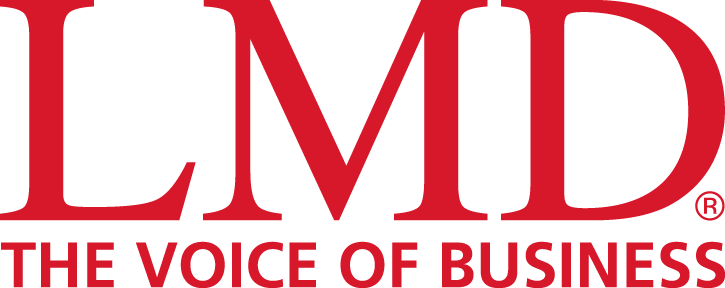FINANCE PROFESSION
Compiled by Tamara Rebeira
EVOLVING FINANCIAL MINDSETS
Chamila Cooray explores how finance and inclusion are shaping resilience
Q: In a volatile economic environment, what approaches to budgeting help businesses stay flexible yet disciplined?
A: In uncertain and rapidly changing economic conditions, businesses must adopt budgeting methods that combine flexibility with financial discipline. The goal is to remain responsive to market shifts while maintaining control over spending and strategic alignment.
Effective approaches include rolling forecasts, which are continuously updated to reflect current realities; scenario planning, which uses ‘what if?’ models to guide proactive decisions; and selective zero based budgeting, where each expense is justified to ensure every cost adds value.
Additionally, driver based budgeting links financial plans to key operational drivers for faster responses to change while activity based budgeting allocates resources to activities that directly support strategic goals.
Effective budgeting also relies on real-time data tracking, cross functional budget reviews and a data driven culture.
Tools such as cash flow dashboards and variance analysis enable evidence based adjustments to sustain performance. By combining structured financial planning with flexibility, adaptive budgeting helps organisations stay disciplined yet nimble, positioning them to thrive amid volatility.
Q: Do you believe traditional static budgets are becoming obsolete in today’s business landscape?
A: Traditional static budgets are not obsolete but they’re increasingly inadequate in today’s rapidly changing business environment.
As volatility, digital disruption and real-time data reshape decision making, companies are shifting towards dynamic and continuous planning models.
Static budgets lose relevance because they lock in assumptions for long periods – often 12 months or more – while market factors can shift within weeks. They’re also slow to be updated and prone to budget gaming, where departments inflate requests or delay spending, leading to inefficiency and misalignment.
While static budgets still promote financial discipline, accountability and regulatory compliance, emerging alternatives – such as scenario planning, driver based models and agile performance management – offer greater flexibility.
Rather than being replaced, static budgets are now one part of a broader, dynamic financial planning ecosystem, providing long-term direction supported by systems that adapt to changing realities.
Q: How has the role of internal audit (IA) evolved from being compliance driven to a strategic business partner?
A: The transformation of IA from a compliance function to a strategic business partner marks a major shift in corporate governance – this is being driven by evolving risks, stakeholder expectations and technology.
Traditionally, IA focussed on verifying compliance and internal controls through a checklist driven approach, which is essential but reactive, identifying errors rather than preventing them.
Today, a volatile risk environment, digital transformation and growing strategic complexity have redefined IA’s role. It has evolved into a trusted advisor aligned with business strategy, addressing emerging risks, providing forward-looking insights and strengthening governance.
The next generation of internal audit will use AI driven risk analytics, deliver real-time assurance, and serve as a strategic intelligence hub connecting governance, performance and innovation. Evolving from policing compliance to enabling performance with assurance, IA now balances independence with strategic influence.
Q: What financial indicators should business leaders focus on to make informed strategic decisions?
A: In today’s volatile business environment, financial insight has become a true competitive advantage.
Paying close attention to financial indicators enables better informed decision making. Modern business leaders must look beyond traditional accounting metrics, and adopt a balanced set of indicators that link strategy, performance and value creation.
The best strategic financial leaders integrate profitability, liquidity, efficiency and risk indicators, to guide adaptive, data driven decisions.
In uncertain markets, agility and insight – not merely control – determine resilience. To use these tools effectively, leaders should align KPIs with strategy, leverage real-time dashboards, benchmark performance and run scenario analyses to stay ahead of change.
Q: How can the success of women in BPO and accountancy services contribute to economic empowerment?
A: The growing participation and success of women in BPO and accounting roles are powerful drivers of Sri Lanka’s economic and social transformation.
These sectors not only promote gender equality but also enhance national competitiveness and resilience. The inclusion of women in structured skill based sectors such as BPO and accounting expands the workforce, boosts productivity and contributes directly to GDP growth.
As export oriented industries, IT-BPM and financial services benefit from diverse talent, strengthening Sri Lanka’s position as a reliable and inclusive outsourcing hub while increasing forex earnings.
This expansion of BPO and accounting operations to secondary cities – along with the rise of remote work – creates valuable opportunities for women beyond Colombo, encouraging regional growth and reducing urban migration.
Women’s income also generates powerful social benefits, empowering households, improving education and health outcomes, and challenging traditional gender norms.
Moreover, greater female participation in finance and accountancy strengthens governance, transparency, and environmental, social and governance (ESG) practices, increasing investor confidence and institutional credibility.
Ultimately, these sectors support Sri Lanka’s Digital Economy 2030 vision by driving highly skilled inclusive and sustainable growth.
The rise of women in BPO and accountancy isn’t only social progress; it’s an economic strategy that expands exports, strengthens governance, and builds a more inclusive and competitive economy.







